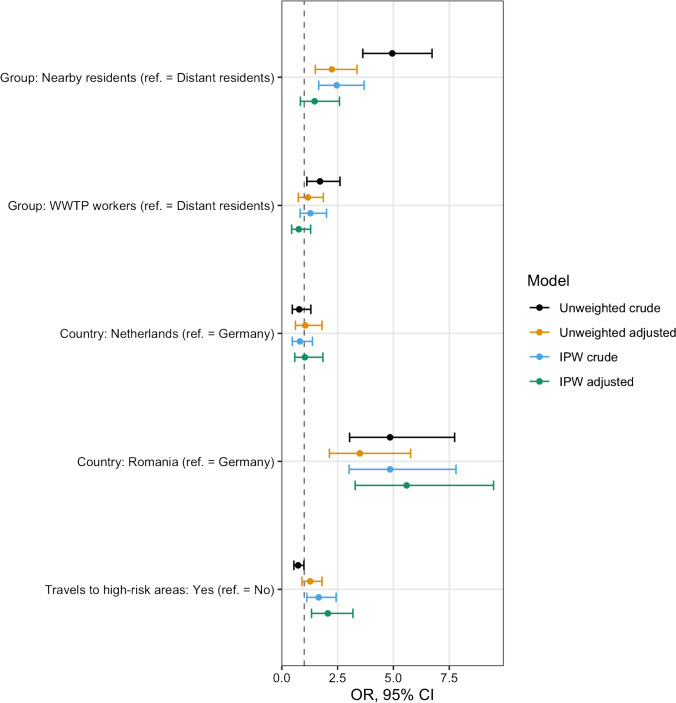Fig. 3.
Comparison of models estimating the effect of participation group (wastewater treatment plant–WWTP–worker, nearby resident, distant resident) as a proxy for exposure routes (ingestion of droplets, hand-to-mouth contact, or inhalation of aerosols) in and around the local WWTP on the presence of ESBL-producing E. coli in stool samples, AWARE Study, 2021. Models adjusted for age, sex, education, country, travels to high risk areas, working with human tissues, antibiotic use, farm visits, hospital visits as patient and hospital visits as a professional. IPW: Inverse Probability Weighted model. ref. = Reference level. Travel to high risk areas for AR in the past year includes travels to North Africa, Sub-Saharan Africa, Asia, Central and South America, as well as the European countries Italy, Greece, Bulgaria, and Slovenia. Crude: Model with only the given variable, ignoring potential covariates. Adjusted: Model with the given variable, including all potential covariates in the exposure-outcome relation. Unweighted: Model without applying inverse probability weights (IPW). Weighted: Model applying inverse probability weights (IPW). See text for details

